The Development of Handwriting Skills in Children
Affiliate and Referral links are used below to promote products I love and recommend. I receive a commission on any purchases made through these links. Please see my disclosure policy for more details. As an Amazon Associate, I earn from qualifying purchases.
Back-to-school time is the perfect time to talk about handwriting skills. As children head back to the classroom, handwriting issues are often brought up.
But addressing handwriting struggles is not as simple as it might seem. Handwriting is a very complex activity that involves lots of underlying skills before we can expect a child to be successful with it.
Another concern is expecting children to achieve handwriting milestones before they are developmentally ready. Expecting a 4 or even 5-year-old to write and pick up a pencil properly and write their letters is just not an age-appropriate skill.
Let’s take a closer look at these building block skills that all children can benefit from developing for future handwriting.
Building Blocks of Handwriting Development
If you have a child struggling with handwriting, going back to basics and addressing these skills is always a good idea.
Before we can expect a child to be successful in handwriting, these building block skills need to be in place:
✔️ Pre-writing skills – future letter formation skills
✔️ Hand grasp/pencil grasp development
✔️ Postural control
✔️ Fine motor control – this includes pincer grasp and in-hand manipulation skills
✔️ Visual-motor integration and visual perception
✔️ Motor planning
✔️ Proprioception – sensory awareness in the fingers
✔️ Sustained attention
Handwriting Developmental Milestones
This does not cover all developmental milestones, but these are the highlighted gross motor, fine motor, visual motor, hand grasp, and other developmental milestones that factor into handwriting.
Also, here is my little PSA before you read through these milestones.
The first thing is to remember that developmental milestones should be used to know what is age-appropriate for a child. My main reason for sharing them has been to show what skills a child is developing for future handwriting. Some children will be able to do a few of the activities mentioned before the age given, some after.
Please don't feel like you have to sit your toddler or preschooler down and have them do each activity listed on a list of milestones to be able to “check it off.” That is not the point of me sharing it.
What I do hope you gain from it is knowing what fine motor skills, visual-motor skills, and gross motor skills are age-appropriate. If you feel pressure to work on a handwriting worksheet, you are equipped with the knowledge to know that completing a handwriting worksheet at this age is not what the focus should be on.
What is appropriate? PLAY!
With all these milestones, the best way to set your child up for future handwriting success is play! And you don't even have to set up a Pinterest-worthy play activity every day. I know I for sure don't!
Have specific items available to your child to use throughout the day such as building blocks, crayons, and paper for drawing, painting supplies, play dough, cooking in the kitchen with you, or working on a sewing or crocheting activity for older children, etc.
Encourage their own independent play and follow their interests. Following the child's interests and including play is always the best practice.
0-1-year-old (0-12 mo)
- Will begin to hold objects in their hands – 3 mo.
- Begins to transfer objects from one hand to another – 3-6 mo.
- Pushes down on legs when legs are on a hard surface – 4 mo.
- Pushes up on elbows while laying on stomach – 4 mo.
- Eyes can track an object towards the middle (midline) or start at the midline to either side – 5 mo.
- Eyes can track an object to the right and left sides, past the midline – 5 mo.
- Can reach to midline for a toy or object while lying on their back – 5 mo.
- Grasp reflex integrates – 5-6 mo.
- Begins to raise their chest with the arms when on their stomach – 6 mo.
- Asymmetrical Tonic Neck Reflex integrates – 6-7 mo.
- Uses a raking grasp to move objects with fingers – 9 mo.
- Squeezes objects with their fist – 9 mo.
- Use an inferior pincer grasp (pads of index finger and thumb) to pick up small objects like round cereal – 10 mo.
- Develops eye-hand coordination by crawling – 11 mo.
- Begins to put small objects in a cup or container – 12 months old
- Transfers objects between hands (beginning of crossing midline skills) – 12 mo.
- Grabs crayons with a fisted grasp – 12 months old
- Can hold two small objects in one hand – 12 months old
- Begins to show a preference for one hand over the other (beginning development of right-handed vs. left-handed) – 12 mo.
1-2 years old (12-24 mo)
- Palmar Supinate Grasp develops (fisted grasp on writing utensil with the thumb pointed towards the top) – 15 mo.
- Claps hands together (beginning of bilateral coordination) – 18 mo.
- Bangs objects together using both hands (beginning of bilateral coordination) – 18 mo.
- Puts small objects into a container – 18 mo.
- Scribbles with crayons on paper – 18 mo.
- Begins to hold a crayon with fingertips and thumb – 24 mo.
- Manipulates clay or play dough with fingers – 24 mo.
- Can pick up small objects with pincer grasp (index finger and thumb) – 24 mo.
- Begins to imitate a vertical line on paper – 24 mo.
- Begins to imitate a circle shape through scribbling – 24 mo.
- Makes snips on paper with scissors – 24 mo.
- Able to string large beads – 24 mo.
2-3 years old (24-36 mo)
- Can string 4 large beads onto a piece of yarn – 29 mo.
- Imitates horizontal lines on paper – 29 mo.
- Begins to imitate a single circle shape – 29 mo.
- Can copy a vertical line – 36 mo.
- Able to cut a piece of paper in half (bilateral coordination and visual motor) – 36 mo.
- Imitates bilateral movements of limbs (e.g. arms up together) – 36 mo.
- Able to complete lacing cards (bilateral coordination) – 36 mo.
- Digital Pronate Grasp develops (fingers and thumb grasping a writing utensil with fingers and thumbs facing the writing tip of the utensil) – 24-36 mo.
3-4 years old (36-48 mo)
- Cuts a piece of paper in half – 36 mo.
- Copies prewriting lines of vertical, horizontal, and circle shapes – 36 mo.
- Can unbutton large buttons – 36 mo.
- Will string 1/2 inch beads – 36 mo.
- Imitates bilateral movements of limbs (e.g. arms up together) – 36 mo.
- Begins to imitate a cross shape – 41 mo.
- Static Tripod Grasp begins to develop – 36 to 48 mo.
- Can touch the tip of each finger to their thumb – 48 mo
4-5 years old (48-59 mo)
- Can draw a person with at least 3 different body parts. – 48 mo.
- Can copy color and shape patterns with blocks or beads. – 53 mo.
- Can copy a cross shape. – 54 mo.
- Begins to imitate a square shape and left/right diagonal lines. – 54 mo.
- Can connect a series of dots spaced 1/2 inch apart to make a simple drawing. – 59 mo.
- Can cut a large circle with scissors. – 59 mo.
- Can cut a square shape with scissors. – 59 mo.
- Static tripod or quadrupod grasp continues to develop – 59 mo.
5-6 years old (60-71 mo)
- Dynamic tripod or quadrupod grasp are both developing and considered efficient grasps (60-71 mo)
- Hand dominance (either right or left-handed) continues to develop and mature (60-71 mo)
- Copies a square, and right/left diagonal lines – 60 mo.
- Begins to imitate an X and triangle shape – 60 mo.
- Can draw a person with 6 or more body parts – 60-65 mo.
- Can begin to write numerals 1-5 – 60-65 mo.
- Copies and X and triangle shape – 66-71 mo.
- Can recognize their name in uppercase letters – 66-71 mo.
- Can name most uppercase letters but not all lowercase – 66-71 mo.
- Can print their name with either uppercase or lowercase letters – 66-71 mo.
Yup, I'm going to say it – having all Kindergarteners learn to begin writing sentences is not developmentally appropriate!
What is appropriate? A focus on letter formations with consistent practice.
In fact, more research is showing that a cognitive-based approach to handwriting practice and intervention shows the most improvement in student outcomes. Zwicker, J., & Hadwin, A. (2009).
Another study found that a “direct and structured approach” to handwriting or a practice-based approach based on motor learning is advocated in the literature as a useful strategy in handwriting remediation”. Tsu-Hsin H, et. al. (2013).
Handwriting should be taught in frequent sessions that focus on the task itself. This should include visual models, visual cues, and opportunities for repetitive practice. Giving students the opportunity to self-evaluate with models or visuals and finding their own errors can also be helpful. Moskowitz, B. H., (2008).
Focusing on only fine/gross motor or visual-motor strategies is not enough. While some studies have shown those do improve some students' handwriting, the best way to see improved handwriting for students is through routine practice and repetition of handwriting.
Get Your Free Handwriting Development Handouts
To get your free printable, enter your email address in the box below and click the “click here” button. You will then be directed to a success page and a special offer I have just for you.
Head to your email inbox and look for an email from Heather at Growing Hands-On Kids and your download will be in that email. Click the green button in that email to confirm and download your free printable.
Once you have downloaded it, head to your “downloads” folder or wherever you have downloads stored on your computer and open and print it. It does help to have Adobe Acrobat Reader installed and updated to the latest version for the best printable experience.
You'll also receive weekly child development tips, tools, and strategies from me. You can unsubscribe from these at any time.
If you are a returning subscriber, thanks for coming back! Don't worry, you won't be subscribed twice. By entering your email again, it just lets my email provider know which printable to send you.
For more resources like this one, check out the links below.
- Pre-Writing Skills Checklist for Kids
- When Should I Teach My Child to Write?
- Should You Teach Print or Cursive First?
- Fun Developmental Activities with Blocks
References for this post:
CDC's Developmental Milestones. (2020, June 10). Retrieved October 26, 2020, from https://www.cdc.gov/ncbddd/actearly/milestones/index.html
Beery, K.E., Beery, N.A. The Beery-Buktencia Developmental Test of Visual-Motor Integration. Minneapolis: NSC Pearson, 2006.
Folio, R.M., Fewell, R.R., Peabody Developmental Motor Scales, 2nd Edition. Austin: Pro-Ed, 2000.
Gross motor skills: Birth to 5 years . (n.d.). Retrieved October 26, 2020, from https://www.chrichmond.org/therapy-services/occupational-therapy/developmental-milestones/gross-motor-skills-birth-to-5-years
PDF [Developmental Skills for Ages 5 to 6 Years]. (2010, June). Minneapolis: Fairview Health Services.
Stensaas, A. M.S., OTR/L. The Developmental Sequence of Visual Motor Skills. Super Duper Publications. 2007.
Triesler, L., PT, CIMI, & Tidman, S., OT/L. (n.d.). Gross motor skills: Birth to 5 years . Retrieved October 26, 2020, from https://www.chrichmond.org/therapy-services/occupational-therapy/developmental-milestones/gross-motor-skills-birth-to-5-years

Heather Greutman, COTA
Heather Greutman is a Certified Occupational Therapy Assistant with experience in school-based OT services for preschool through high school. She uses her background to share child development tips, tools, and strategies for parents, educators, and therapists. She is the author of many ebooks including The Basics of Fine Motor Skills, and Basics of Pre-Writing Skills, and co-author of Sensory Processing Explained: A Handbook for Parents and Educators.

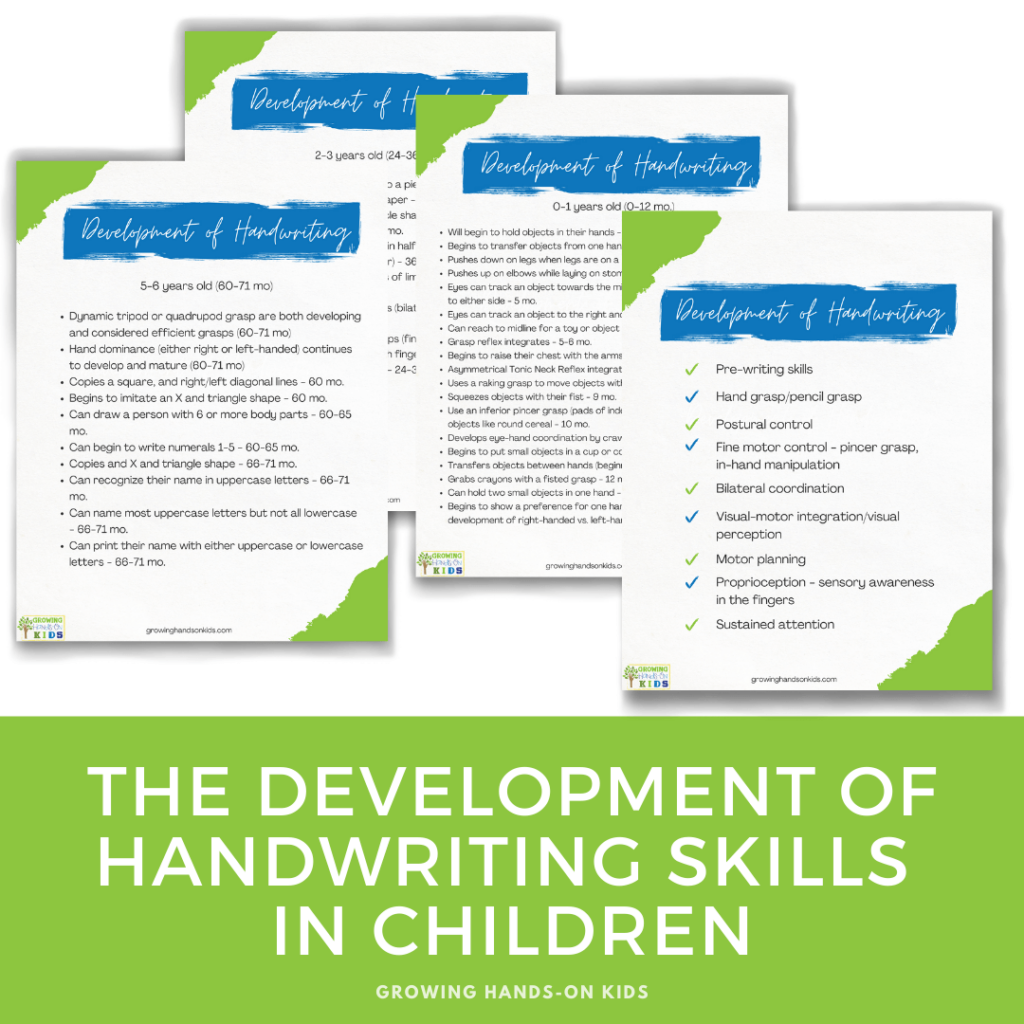
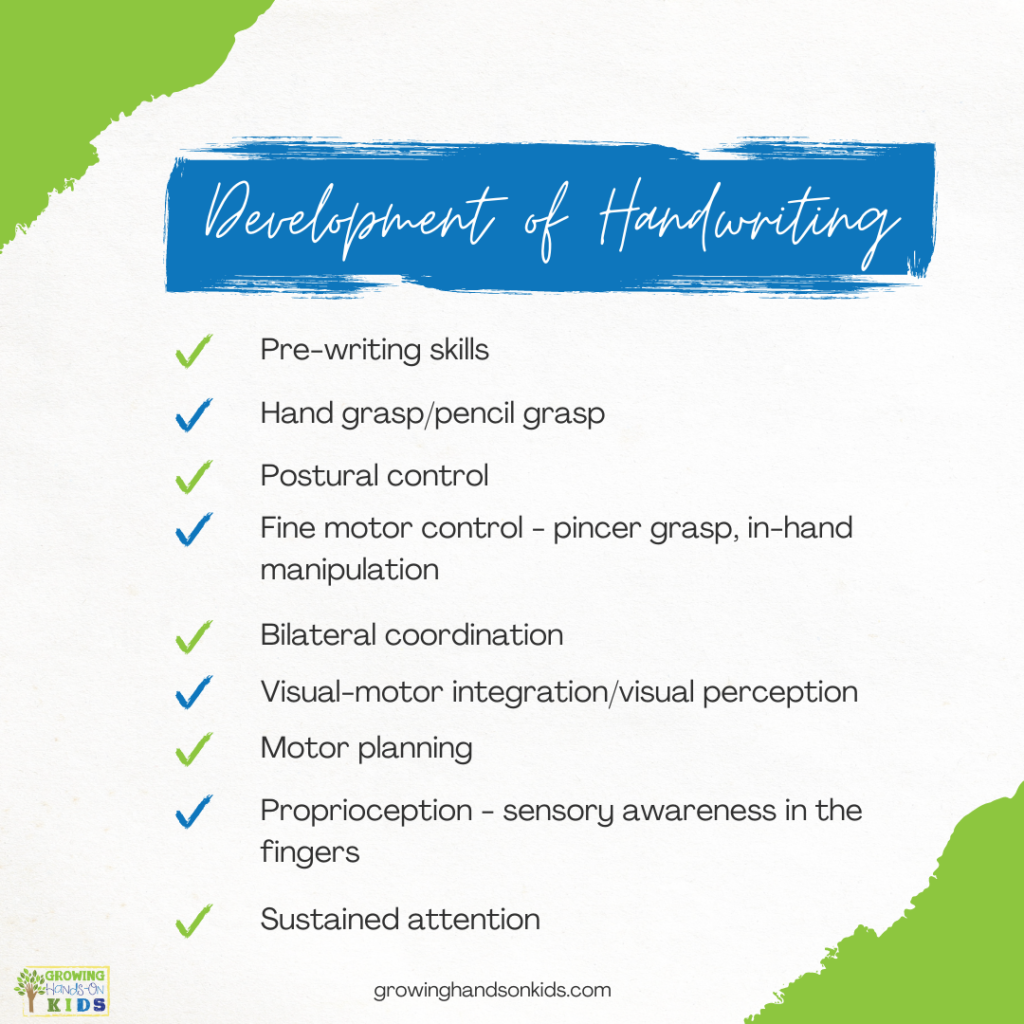
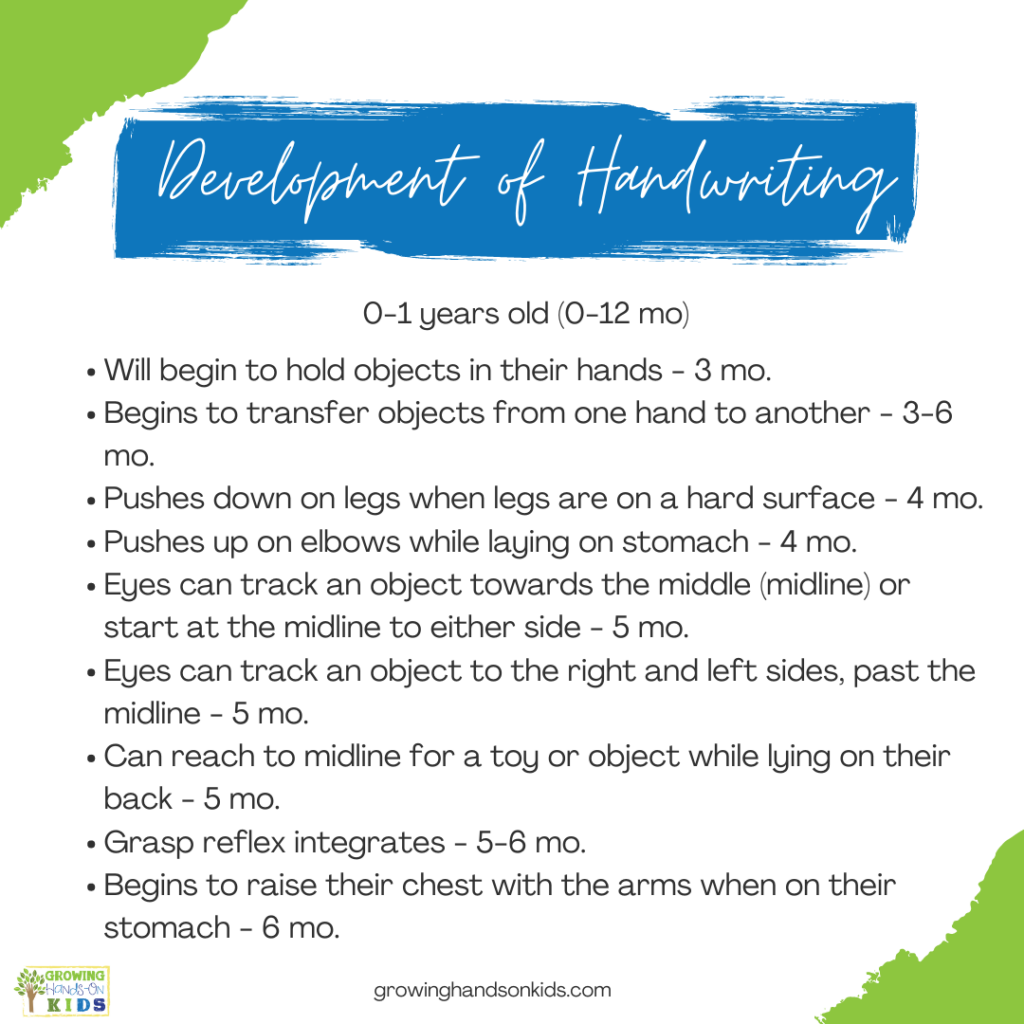
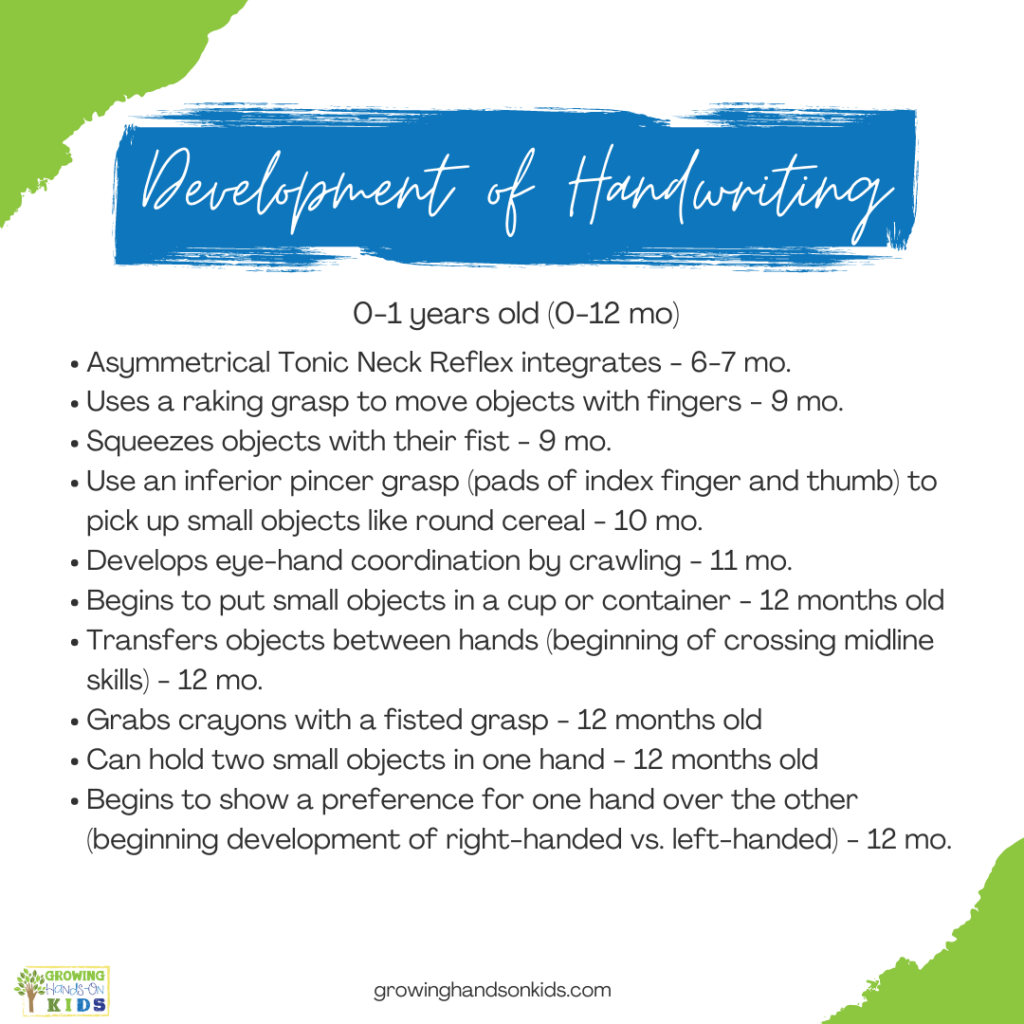
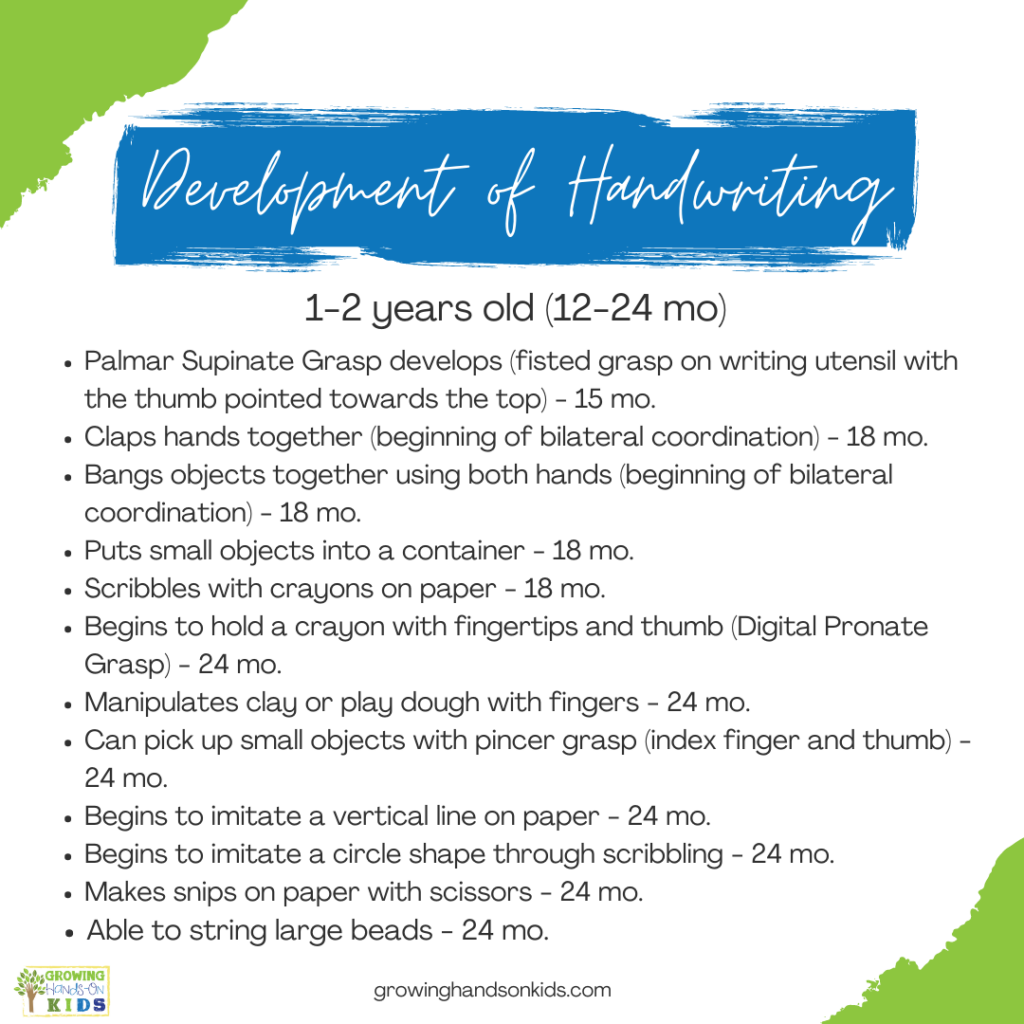
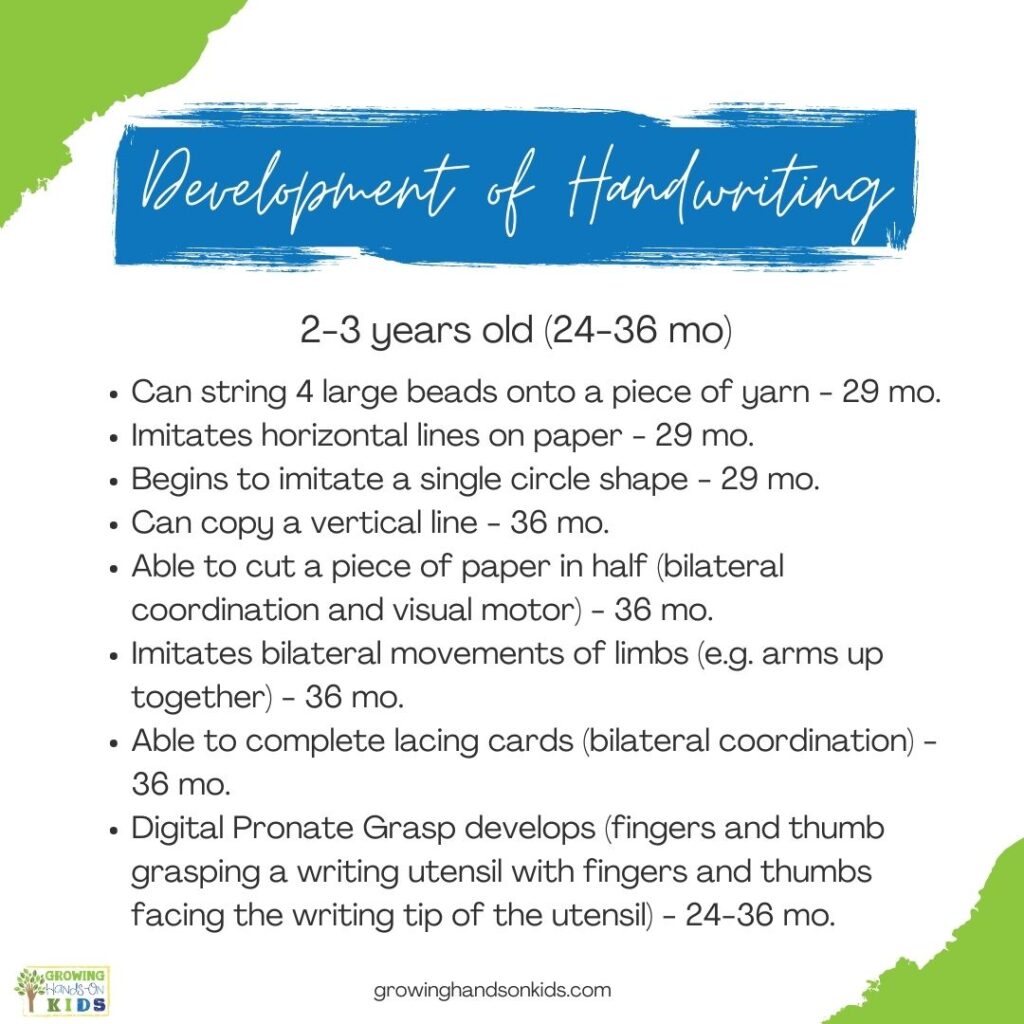
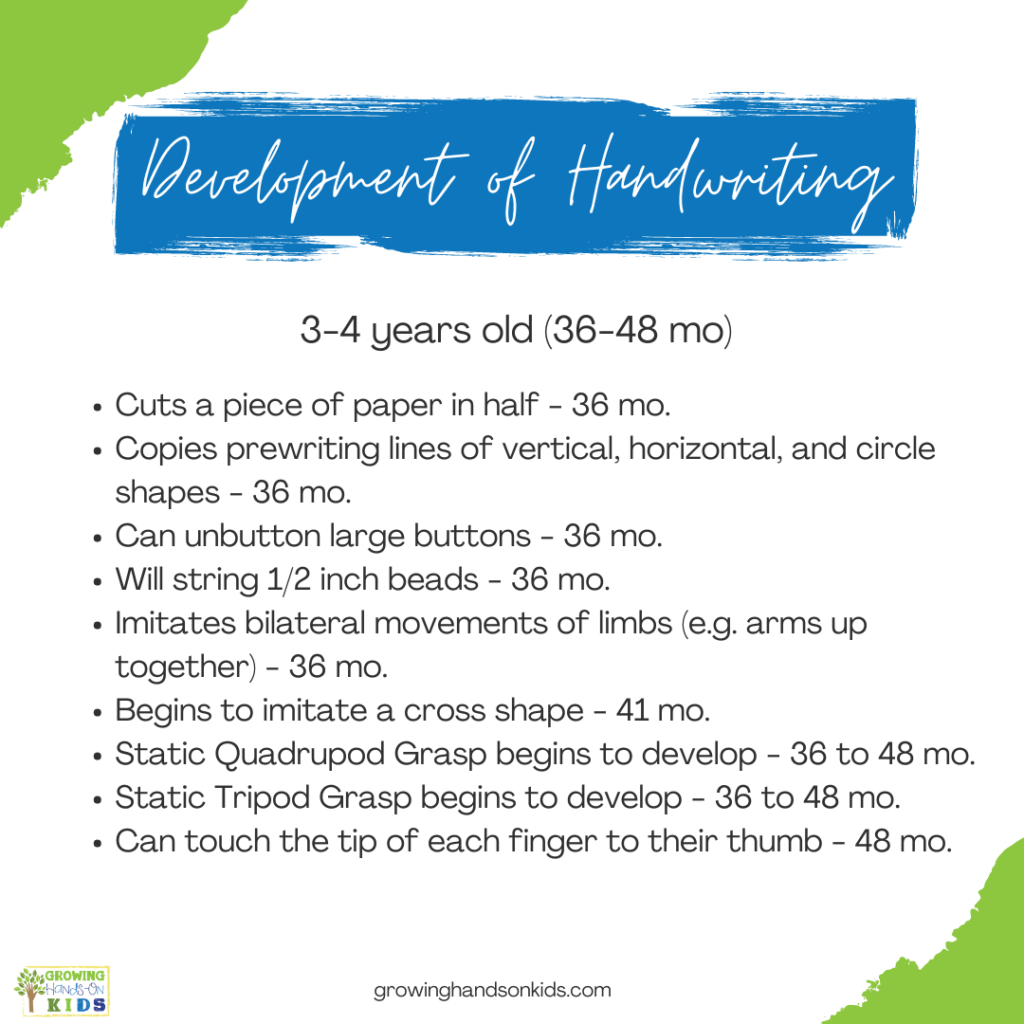
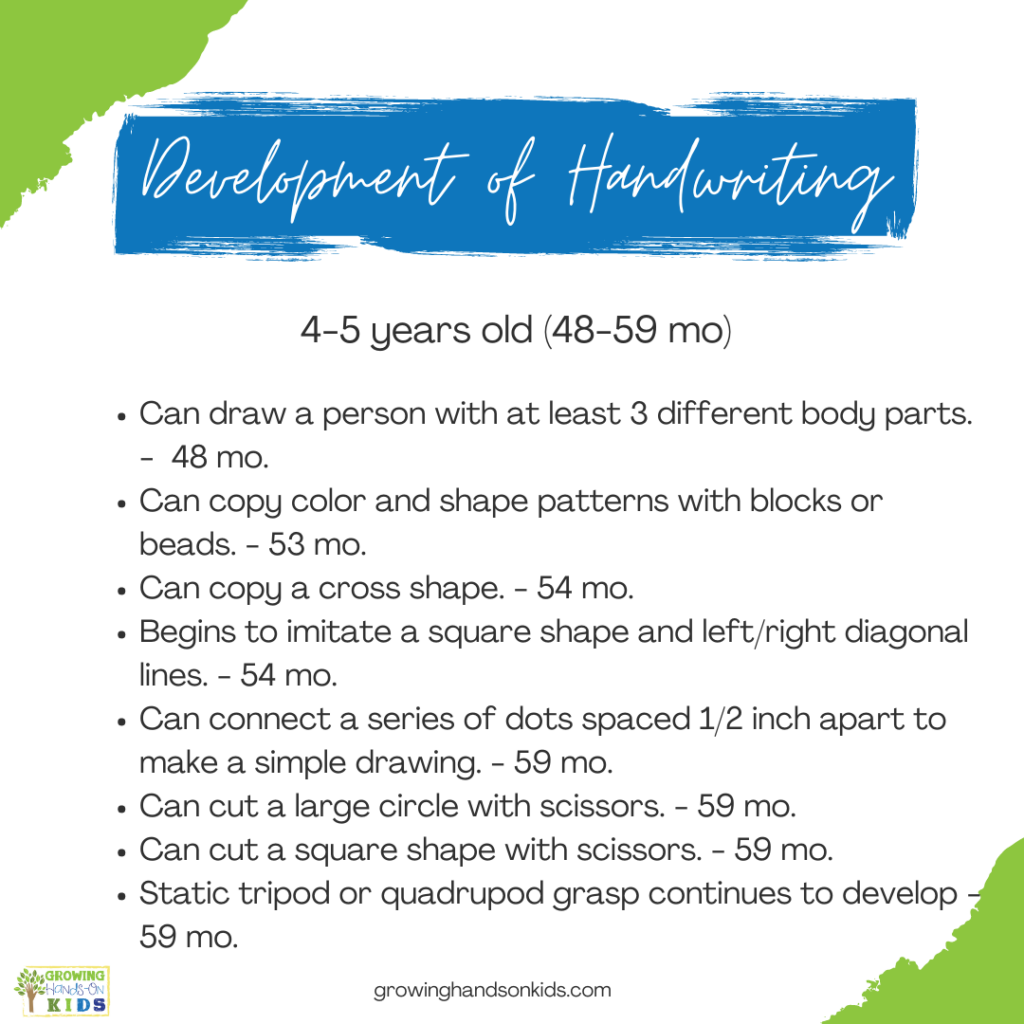
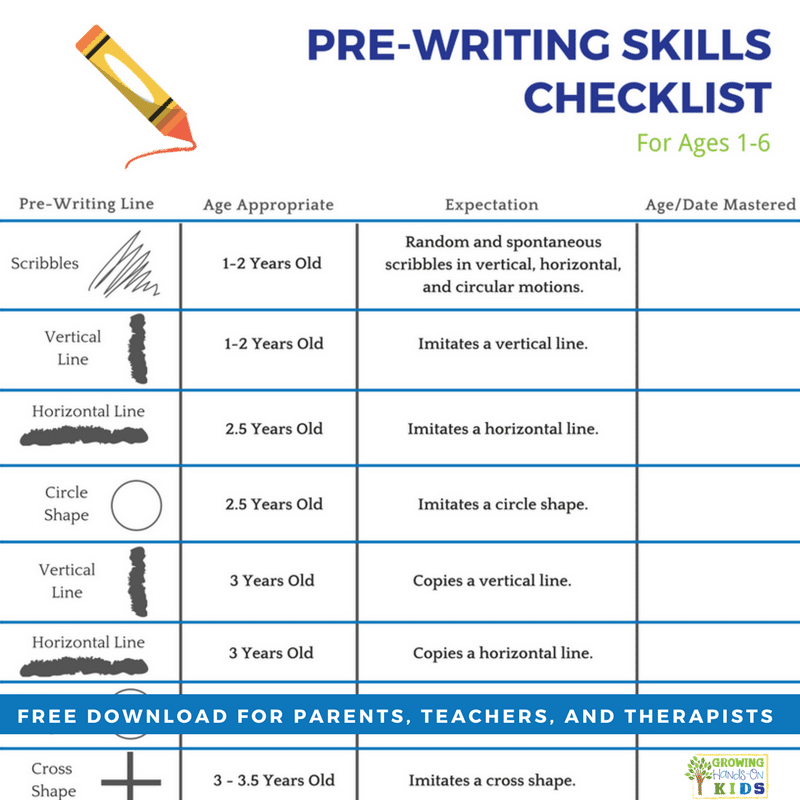
Hi Heather!
Can you send me the original source(s) for these developmental milestones?
Thanks!
-Terisa 🙂
Hi Terisa, Thanks for asking. I thought I had included them but realized I just had them on the actual handout. I’ve added them to the bottom of the post above.